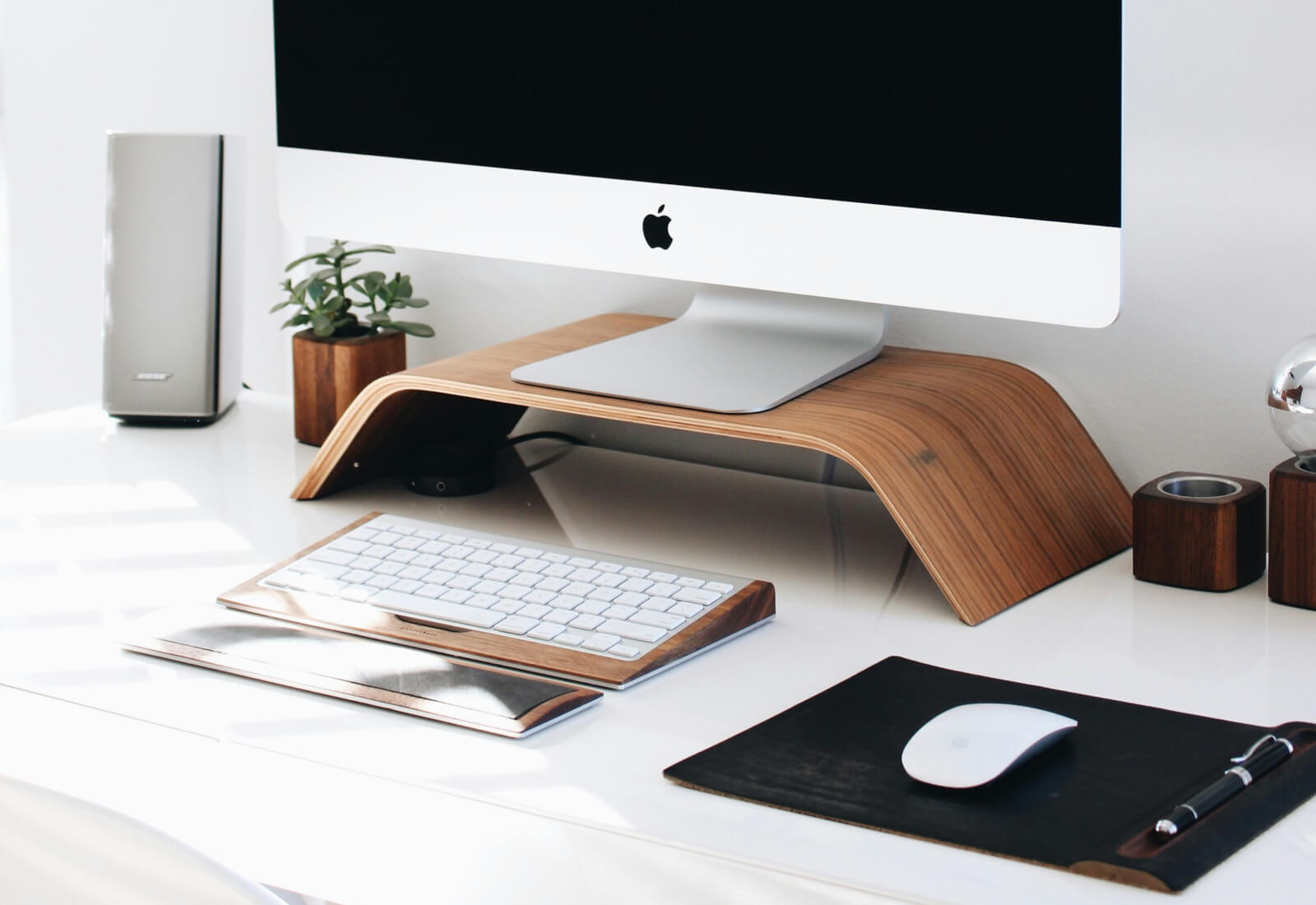
Thing is, we’ve all been there. You’re an hour into a three-hour video meeting, and your mind is already wandering to your weekend plans.
read more
Hey there, fellow work-from-home warriors! 🏠💼
Remember when we thought working from home would be all pajamas and productivity? Yeah, about that… turns out, it’s more like a constant juggling act between Slack notifications and the siren call of that pile of laundry. But don’t worry, I’ve got your back. Let’s dive into the nitty-gritty of managing workload expectations when your office is just a few steps from your bed.
As someone who transitioned from a cushy corporate job to freelance UX design, I’ve had my fair share of work-from-home challenges. There was this one time I was deep into a client project, headphones on, totally in the zone. Suddenly, my cat Pixel decided it was the perfect moment for an impromptu dance recital on my keyboard. Needless to say, my client got a very interesting and unintended design update that day!
Thing is, being always available isn’t just exhausting—it’s unsustainable. So how do we strike that elusive balance? Here’s the tea on managing workload expectations when you’re perpetually “at the office.”
First things first: let’s lay down some ground rules. Creating a solid foundation is key to maintaining your sanity in the work-from-home world.
Set defined working hours and stick to them like your productivity depends on it—because it does. Use your calendar to block off your work hours. Treat them as non-negotiable appointments with yourself. I learned this the hard way when I found myself answering client emails at 2 AM, still in my PJs from the day before. Not a good look, trust me.
Actionable Tip: Use Google Calendar or your preferred scheduling tool to block out your work hours. Set reminders for the start and end of your workday. For example, I have a 9 AM “Start Work” reminder and a 6 PM “Shut It Down” alert. It’s like having a virtual boss telling you when to clock in and out.
Establishing boundaries is crucial. It’s like building a virtual fence around your work life. Communicate these boundaries clearly to your team, your family, and most importantly, yourself. I once had a client who’d call at all hours, assuming I was always on the clock. After a frank discussion about my working hours, our relationship improved dramatically. Plus, I got my evenings back!
Actionable Tip: Create a “working hours” document outlining your availability and share it with your team and clients. Include it in your email signature for easy reference. Mine looks something like this:
“Working Hours: Monday-Friday, 9 AM - 6 PM PST Response Time: Within 24 hours during working days Urgent Matters: Please mark emails as [URGENT] in the subject line”
Carve out a dedicated workspace in your home. It doesn’t have to be fancy—even a corner of your dining table can work. The key is consistency. This space becomes your office, and when you’re there, you’re in work mode. For me, it’s a small desk by the window where I can see the skyline. It’s my little slice of productivity paradise.
Actionable Tip: Designate a specific area in your home for work. If space is limited, use visual cues like a specific desk lamp or a plant that you only have out during work hours. I have a small pothos plant named “Workbuddy” that sits on my desk only during work hours. When Workbuddy’s out, it’s go-time!
Now that we’ve set the stage, let’s talk about the hardest part: actually disconnecting when work hours are over.
Develop a wind-down routine to transition from work to personal time. It’s like a reverse morning routine, signaling to your brain that it’s time to switch gears. My routine involves a quick 10-minute yoga session followed by brewing a cup of tea. The aroma alone tells my brain it’s time to chill.
Actionable Tip: Create a simple 10-15 minute end-of-day routine. It could be as simple as tidying your desk, writing tomorrow’s to-do list, and changing into comfy clothes. Try this:
Learning to say no is a superpower. Not every request deserves your immediate attention. Prioritize ruthlessly and don’t be afraid to push back on non-essential tasks. I used to be a chronic “yes” person, but that led to many sleepless nights and mediocre work. Now, I carefully evaluate each request before committing.
Actionable Tip: Before saying yes to a new task, ask yourself: “Does this align with my current priorities?” If not, politely decline or negotiate a later deadline. Here’s a script I often use:
“Thank you for thinking of me for this project. Unfortunately, my current workload doesn’t allow me to take on additional tasks at this time. Would it be possible to revisit this in [specific timeframe]?”
Use status indicators or out-of-office messages liberally. Let your team know when you’re deep in focus mode or when you’ve logged off for the day. I’ve set up automatic status updates on Slack based on my calendar. When I’m in “Do Not Disturb” mode, my status changes to “In the UX zone. Will resurface at 2 PM. 🎨”
Actionable Tip: Set up automatic status updates in your team communication tool (like Slack or Microsoft Teams) based on your calendar events. For example:
In the work-from-home world, it’s easy to fall into the trap of thinking more hours = more work. Let’s bust that myth wide open.
Prioritize your tasks like a pro. Use methods like the Eisenhower Matrix to sort your to-dos into urgent/important categories. This has been a game-changer for me. I used to waste time on low-priority tasks just because they were easy. Now, I tackle the important stuff first, even if it’s challenging.
Actionable Tip: At the start of each day, identify your top 3 most important tasks. Focus on completing these before moving on to less critical work. Try this method:
Shift your focus (and your team’s) from hours worked to results achieved. It’s not about how long you sit at your desk—it’s about what you accomplish. When I started freelancing, I felt guilty if I finished my work early. Now, I celebrate efficiency and use that extra time for learning or personal projects.
Actionable Tip: In your weekly reports or check-ins, focus on highlighting your achievements and completed tasks rather than hours worked. For example: “This week’s accomplishments:
Working from home doesn’t mean you’re available for household chores or impromptu chats 24/7. Time to get your family or housemates on board.
Have a sit-down with your household to explain your work schedule. Make it clear that when you’re in your workspace, you’re essentially “at the office.” I had to have this chat with my well-meaning but overly chatty neighbor who thought my working from home meant I was always available for coffee and gossip.
Actionable Tip: Create a simple “Do Not Disturb” sign for your workspace. Flip it to “Available” during breaks or after work hours. You could even make it fun – I have a little traffic light sign. Red means “in a meeting,” yellow means “working but can be interrupted for important things,” and green means “come chat!”
Schedule regular check-ins with your team. This helps maintain connection and ensures everyone’s on the same page about projects and priorities. I have a weekly virtual coffee break with my design buddies. We chat about projects, share tips, and sometimes just vent. It’s like those water cooler moments, but with better coffee and no pants required.
Actionable Tip: Set up a recurring weekly or bi-weekly virtual “coffee chat” with your teammates. Keep it casual and use it as a time to connect beyond just work tasks. Try this agenda:
In the midst of juggling work and home life, don’t forget about the most important person: you!
Take regular breaks throughout the day. Step away from your desk, stretch, or take a quick walk. Your brain (and your back) will thank you. I set a reminder to do a quick dance routine every couple of hours. It gets my blood flowing and often leads to unexpected bursts of creativity.
Actionable Tip: Use the Pomodoro Technique: work for 25 minutes, then take a 5-minute break. After four cycles, take a longer 15-30 minute break. There are plenty of apps that can help with this, or you can use a simple kitchen timer. During your breaks, try these quick self-care activities:
Create clear distinctions between your work and personal life. When work is over, truly disconnect. Resist the urge to check emails or “just finish one more thing.” I used to be terrible at this, but now I have a strict “no work after 6 PM” rule. That’s when I switch gears to experiment with recipes or tend to my hobbies.
Actionable Tip: Use separate devices or user accounts for work and personal activities if possible. If not, use different browsers or profiles to keep work and personal tasks separate. For example:
Working from home often leads to a sneaky pitfall: overcompensating by working longer hours. Let’s nip that in the bud.
Avoid the temptation to prove your productivity by logging extra hours. Focus on efficiency and output instead. I fell into this trap when I first started freelancing, working ridiculous hours to justify my rates. Now, I focus on delivering high-quality work within reasonable timeframes.
Actionable Tip: Track your working hours for a week. If you’re consistently working overtime, reassess your workload and discuss it with your manager or clients. Use a time-tracking app like Toggl or RescueTime to get an accurate picture of your work patterns. If you find yourself regularly working more than your set hours, it’s time for a conversation about workload or efficiency.
Communicate your availability consistently. Use shared calendars, regular updates, and clear out-of-office messages to keep everyone informed. I have a template email that I send to new clients explaining my working hours and response times. It sets clear expectations from the get-go.
Actionable Tip: Create email templates for common scenarios like “Out of Office,” “Delayed Response,” or “Working Hours” to quickly communicate your availability. Here’s a sample “Working Hours” template:
“Thank you for your message. Please note my working hours are Monday to Friday, 9 AM to 6 PM PST. I typically respond to emails within 24 hours during working days. For urgent matters, please call [phone number]. I appreciate your understanding as I strive to maintain a healthy work-life balance.”
Use technology to your advantage in managing expectations and workload.
Explore tools designed to help manage workload and communicate availability. From project management apps to time-tracking software, find what works for you. I swear by Trello for project management and RescueTime for tracking my productivity. These tools have helped me identify my most productive hours (spoiler: it’s not 2 AM).
Actionable Tip: Try out different productivity apps for a week each. Stick with the one that feels most intuitive and helpful for your workflow. Here’s a starter list:
When setting deadlines, be realistic. Factor in potential interruptions and the unique challenges of working from home. I always add a buffer day to my timelines for those unexpected “life happens” moments, like when Pixel decides my laptop is the perfect napping spot.
Actionable Tip: When estimating project timelines, use the “multiply by pi” rule: take your initial estimate and multiply it by 3.14 to account for unexpected delays. For example, if you think a task will take 2 days, budget for about 6 days. It might seem excessive, but it’s better to under-promise and over-deliver than the other way around.
Establishing a solid routine can be your secret weapon in managing workload expectations.
Develop a routine for starting and ending your workday. It signals to your brain (and your household) that you’re shifting in and out of work mode. My morning routine involves some light yoga, a quick meditation session, and then putting on my “work clothes” (which, let’s be honest, is just a slightly fancier version of PJs). To end the day, I tidy up my desk, jot down priorities for tomorrow, and do a quick sketch to switch my brain to creative mode.
Actionable Tip: Create a “start work” and “end work” playlist. Play the start work playlist to get into work mode, and the end work playlist to signal it’s time to wind down. Here’s a sample routine:
Morning Routine:
Evening Routine:
Being open about your workload and capacity is crucial in a remote work environment.
Regularly communicate with your manager or clients about your current workload and capacity. This helps prevent overload and ensures realistic expectations. I have a monthly check-in with my regular clients to discuss ongoing projects and upcoming work. It’s helped me avoid many potential crunch times.
Actionable Tip: Create a simple weekly or bi-weekly status report template. Include current projects, upcoming deadlines, and any potential capacity issues. Here’s a basic template:
Weekly Status Report Date: [Insert Date]
Current Projects:
Upcoming Deadlines:
Capacity:
Challenges/Blockers:
Regularly reassess and adjust your work-life balance. What worked last month might not work now, and that’s okay. I do a quarterly “life audit” where I evaluate my work satisfaction, stress levels, and overall well-being. It helps me stay on track and make necessary adjustments before burnout hits.
Actionable Tip: Set a recurring calendar reminder to do a quick self-check every month. Ask yourself these questions:

Thing is, we’ve all been there. You’re an hour into a three-hour video meeting, and your mind is already wandering to your weekend plans.
read more
Hey there, fellow remote warriors! Priya here, your friendly neighborhood UX designer.
read more
In the era of remote work, maintaining the human touch in our digital workspaces has become more crucial than ever.
read more
Hey there, fellow remote warriors! 🚀 Ever found yourself staring at a blank screen, willing your brain to conjure up that perfect idea?
read more
The day my company announced we were going fully remote, I felt a mix of excitement and dread.
read more
It was 2 AM, and I found myself staring at a passive-aggressive Slack message from a coworker.
read more